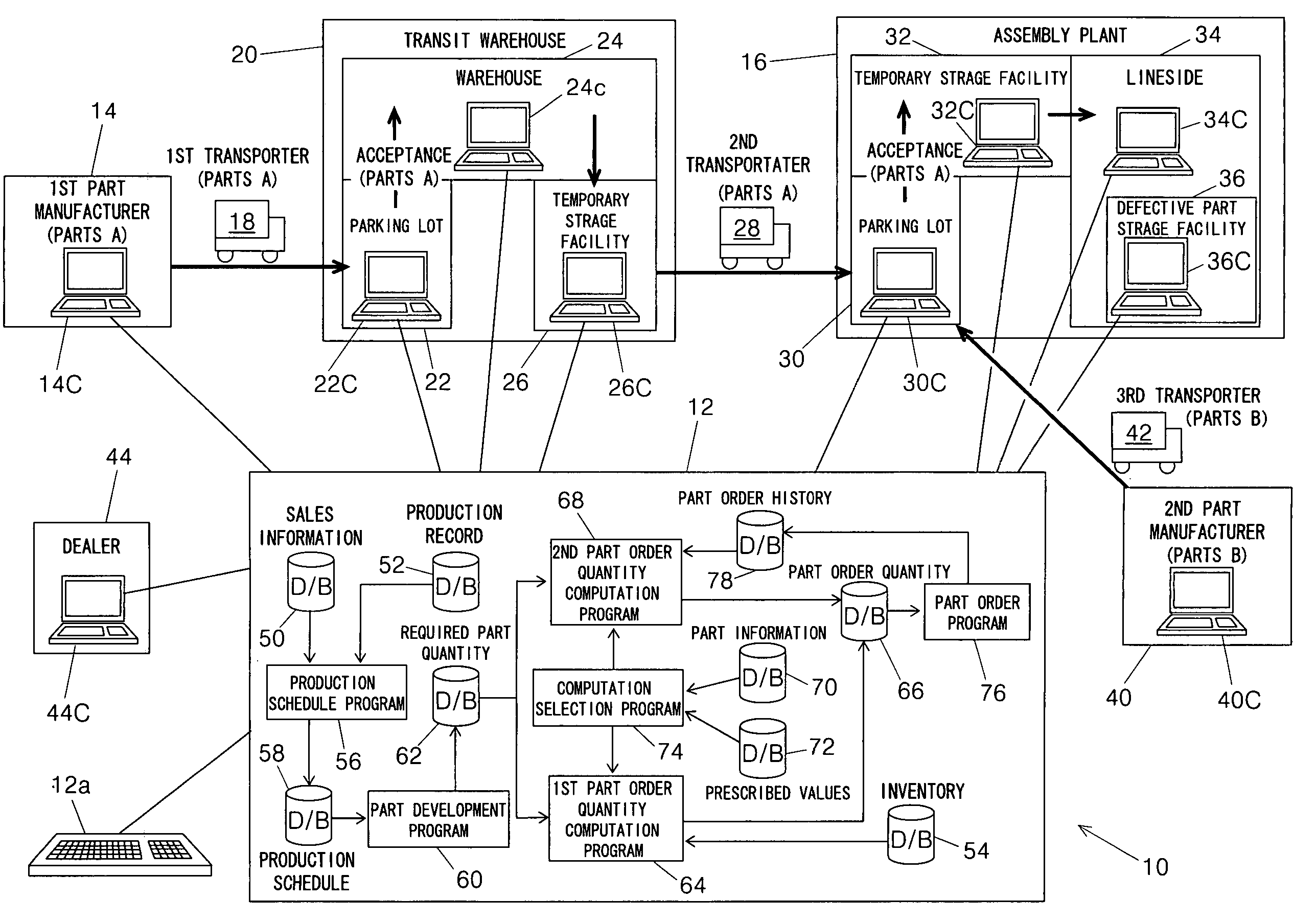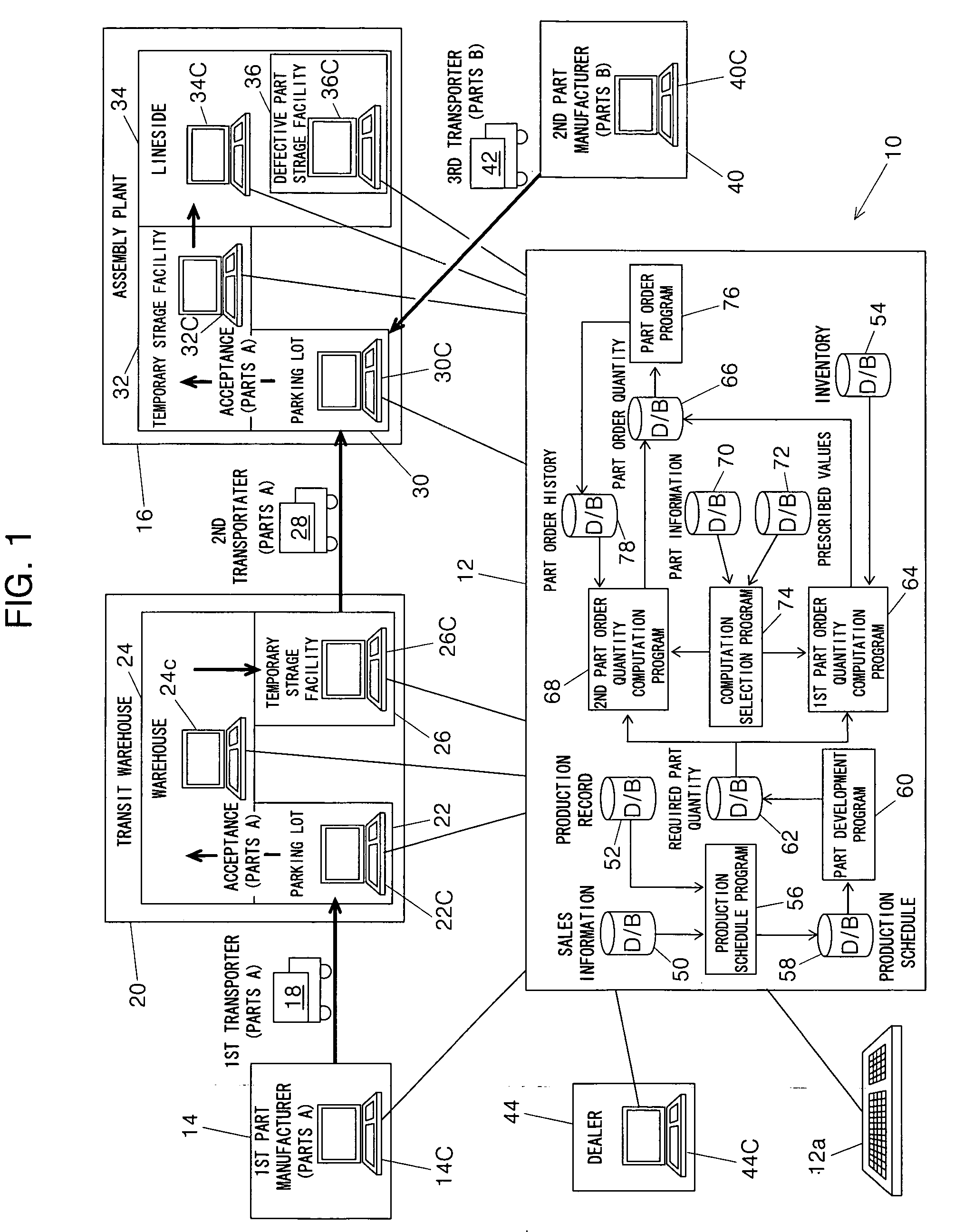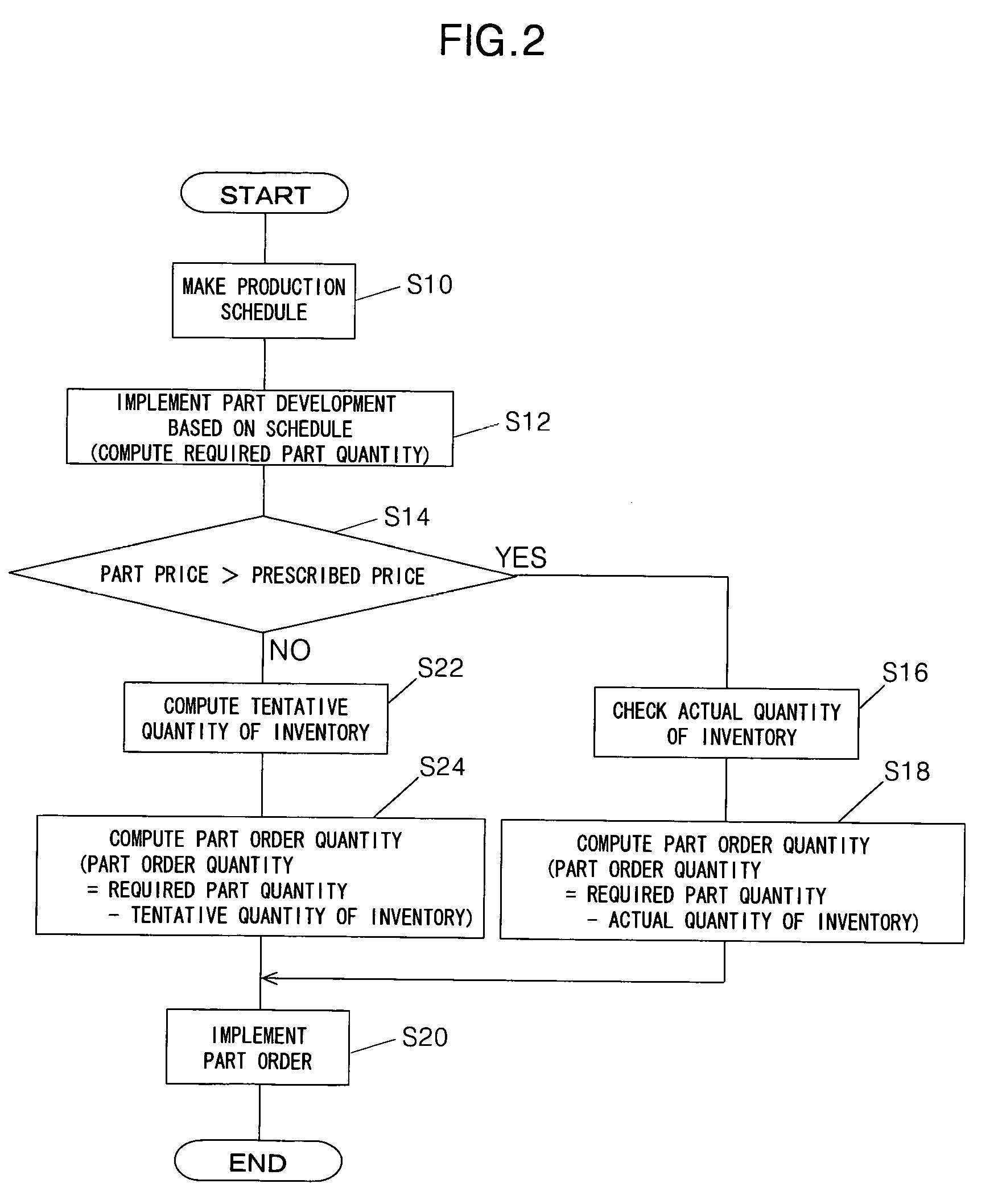Part ordering amount calculation device
a calculation device and part order technology, applied in the field of part order quantity computation system, can solve the problems of complicated process and computation technique change, and achieve the effect of reducing the quantity of inventory, facilitating change, and effectively utilizing
- Summary
- Abstract
- Description
- Claims
- Application Information
AI Technical Summary
Benefits of technology
Problems solved by technology
Method used
Image
Examples
first embodiment
[0062] The first embodiment is thus configured to have a system (10) for computing an order quantity of parts (parts A, parts B) constituting a product based on a production schedule of the product, comprising: required part quantity computing means (host computer 12, part development program 60, S12) for computing a required quantity of the parts based on the production schedule; actual inventory quantity checking means (host computer 12, inventory database 54, S16) for checking an actual quantity of inventory of the parts; first part order quantity computing means (host computer 12, first part order quantity computation program 64, S18) for computing a first part order quantity for a predetermined first period of time based on the computed required quantity of the parts and the checked actual quantity of inventory of the parts; tentative inventory quantity computing means (host computer 12, second part order quantity computation program 68, S22) for computing a tentative quantity ...
second embodiment
[0070] The second embodiment is thus configured to have a system (10) for computing an order quantity of parts (parts A, parts B) constituting a product based on a production schedule of the product, comprising: required part quantity computing means (host computer 12, part development program 60, S12) for computing a required quantity of the parts based on the production schedule; actual inventory quantity checking means (host computer 12, inventory database 54, S16) for checking an actual quantity of inventory of the parts; first part order quantity computing means (host computer 12, first part order quantity computation program 64, S18) for computing a first part order quantity for a predetermined first period of time based on the computed required quantity of the parts and the checked actual quantity of inventory of the parts; tentative inventory quantity computing means (host computer 12, second part order quantity computation program 68, S22) for computing a tentative quantity...
third embodiment
[0079] The third embodiment is thus configured to have a system (10) for computing an order quantity of parts (parts A, parts B) constituting a product based on a production schedule of the product, comprising: required part quantity computing means (host computer 12, part development program 60, S12) for computing a required quantity of the parts based on the production schedule; actual inventory quantity checking means (host computer 12, inventory database 54, S16) for checking an actual quantity of inventory of the parts; first part order quantity computing means (host computer 12, first part order quantity computation program 64, S18) for computing a first part order quantity for a predetermined first period of time based on the computed required quantity of the parts and the checked actual quantity of inventory of the parts; tentative inventory quantity computing means (host computer 12, second part order quantity computation program 68, S22) for computing a tentative quantity ...
PUM
 Login to View More
Login to View More Abstract
Description
Claims
Application Information
 Login to View More
Login to View More - R&D
- Intellectual Property
- Life Sciences
- Materials
- Tech Scout
- Unparalleled Data Quality
- Higher Quality Content
- 60% Fewer Hallucinations
Browse by: Latest US Patents, China's latest patents, Technical Efficacy Thesaurus, Application Domain, Technology Topic, Popular Technical Reports.
© 2025 PatSnap. All rights reserved.Legal|Privacy policy|Modern Slavery Act Transparency Statement|Sitemap|About US| Contact US: help@patsnap.com



